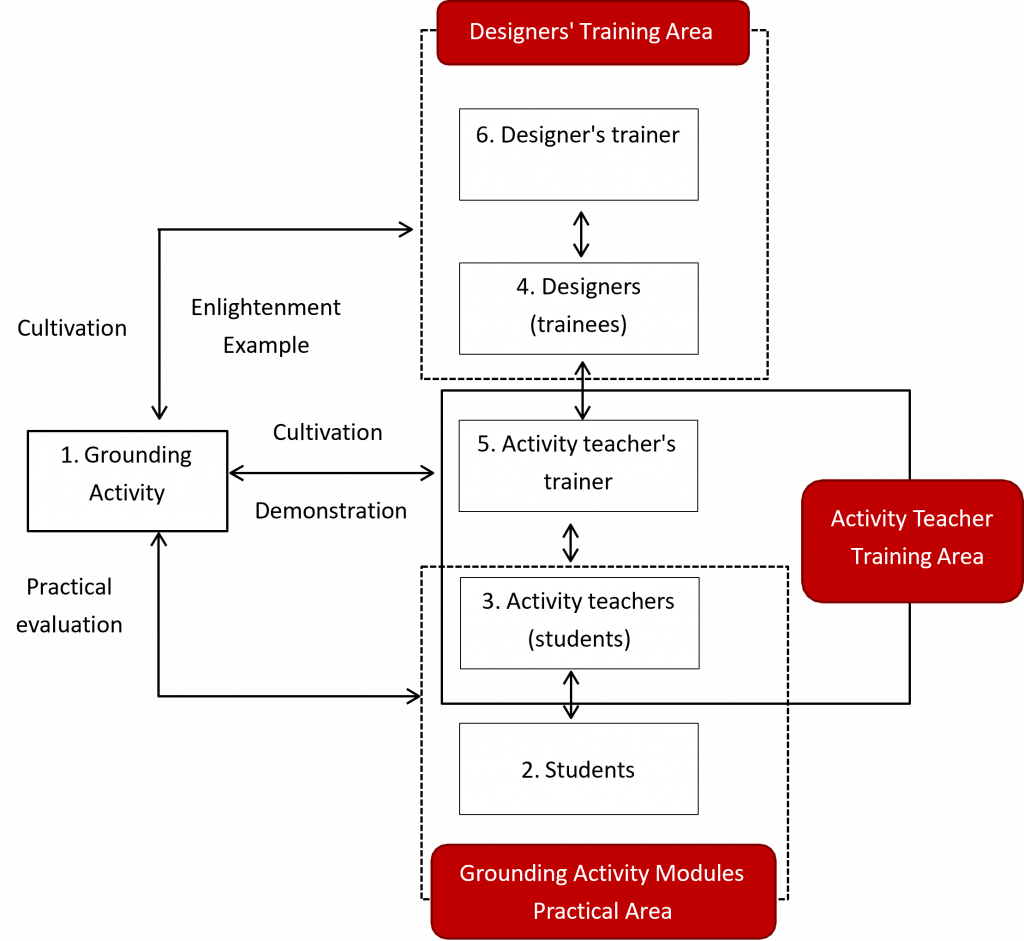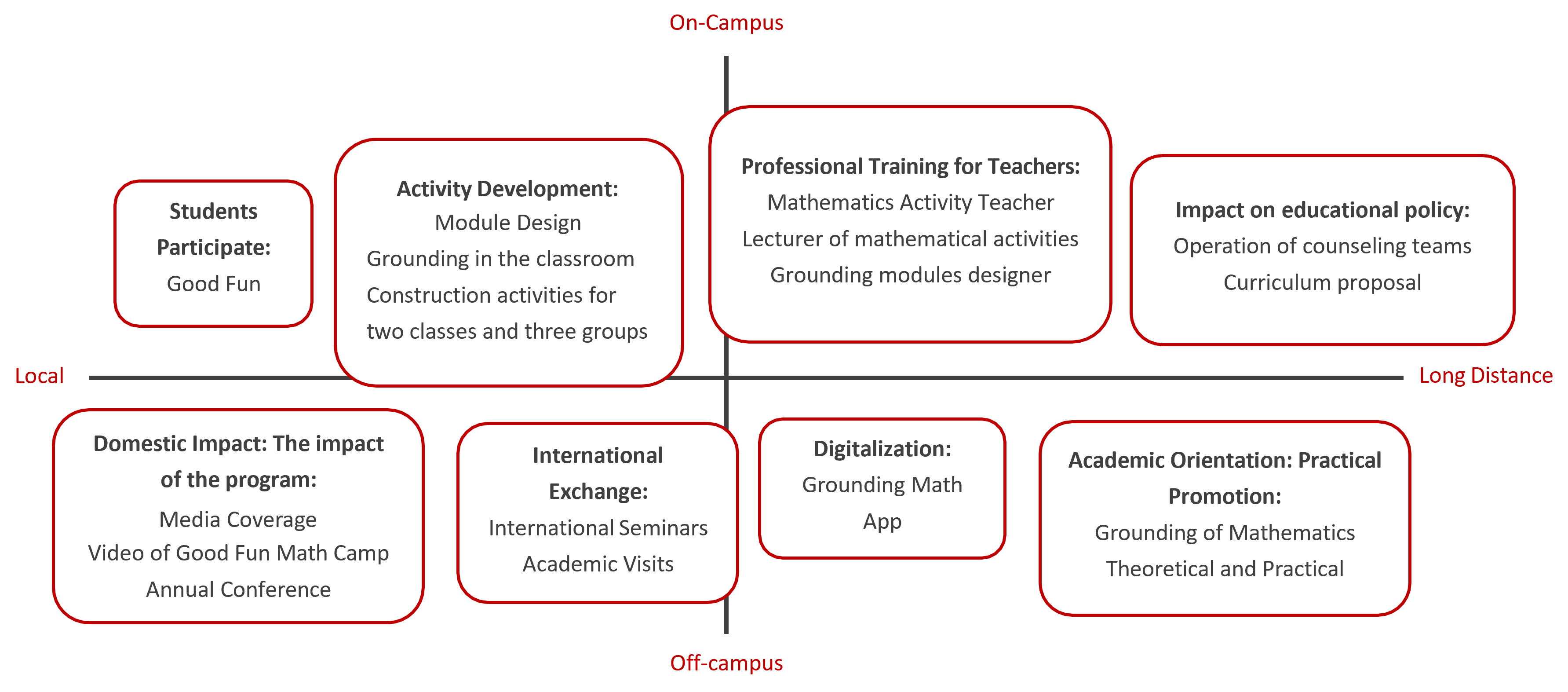A Design-Based Study of "Just Do Math" (NSTC, 2016-2018)
Program Period: 2016/07-2017/06, 2017/07-2018/06
Program Facilitators: Kai-Lin Yang; Hui-Yu Hsu; Yuan-Shun Lee; Ting-Ying Wang; Cheng, Ying-Hao Cheng, Jian-Cheng Chen
Origins
- 2014 Professor Lin Fulai’s first Grounding Activity
- In 2015, we applied for the Ministry of Education’s “JUST DO MATH” program.
Objectives:
1. To enhance the confidence and interest of our students in learning mathematics.
2. To improve the learning effectiveness of low-achieving students in mathematics.
Strategy: Mathematics Grounding Activities
Implementation: 1) Activity design; 2) Activity teacher training; 3) Activity camps
Impact: Another Ministry of Education commissioning program for two classes and three groups for adaptive teaching (development of construction activities)
- Continued to design and promote “Math Grounding Activities” in 2017
Joined: designer workshops, activity teacher training camps
The Ministry of Science and Technology’s “Learning Mathematics” program
Originated from the master program: three common research goals
- to produce and evaluate the effectiveness of the grounding activity modules
- to evaluate the effectiveness of workshops for activity teachers, instructors, and designers
- to develop a professional learning model for activity teachers, designers, activity teacher instructors, and designer trainers

Master Program: Framework and Research Questions
1. how to produce and evaluate the effectiveness of the foundational activity modules? (Sub-programs 1 and 2)
2. How to evaluate the effectiveness of a good fun math camp? (Sub-programs 1, 2, 3, 5)
3. how to evaluate the effectiveness of activity teacher workshops? (Sub-programs 3, 5)
4. How to evaluate the effectiveness of the Designer’s Workshop? (Sub-programs 4, 6)
5. What are the professional differences between activity teachers and designers? (Sub-programs 3, 4)
6. what are the professional differences between activity teacher lecturers and designer trainers? (Sub-programs 5, 6)
The importance of JUST DO MATH (JDM) and innovation
- Importance
Solve the problem of math education: good grades but still don’t like to learn math, big gap in students’ performance in the world
- Innovation (compared to the existing literature)
1. Application Oriented
Activity Goal: The goal of this activity is not to practice or apply The mathematics learned, but to develop The mathematics to be learned.
Activity Principle: “Active” reflective abstraction (motivation to learn, recallable concrete experiences, self- and other-adjustment)
Activity Path: A coherent learning activity that takes into account both the “macro and the micro”, from before to during the lesson.
2. Theory orientation
Grounding Activities Design Theory = Miss*Mr. Grounding learning Theorying
Multiple “interactions” between the roles of activity teachers, activity presenters, designers, and design educators
The “continuous” professional development mechanism: from implementation → design → reflective practice → professional development
